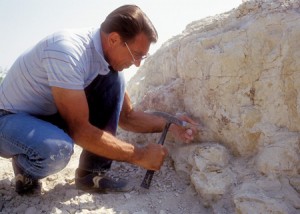
The prehistoric land bridge that allowed animals to freely migrate between North and South America formed a million years earlier than previously thought, according to a study by BYU geology professor Wade E. Miller, ’60.
Scientists previously agreed that the Isthmus of Panama formed between 2.5 and 3 million years ago, an event that led to the vast intermixing of plants and animals across continents.
“We found evidence of animals that couldn’t have made their way to North America before the formation of the land bridge,” says Miller. “The fossils predate what is generally accepted as the time of the isthmus’s formation by a million years.”
Before the isthmus formed, scientists believe a series of islands between North and South America may have allowed some animals to swim or fly back and forth.
“But other animals couldn’t make that trip,” says Miller. “As we discovered the dates on the fossils of these land-bound animals, we realized they were earlier than any of the dates that had been given before.” Miller collected the fossils from more than 100 sites inside the trans-Mexican volcanic belt in central Mexico. “We figure they got there by way of the land bridge, which formed before that time.”
Published in a recent issue of the Brazilian Journal of Paleontology, the study describes Miller’s collection of fossilized remains of animals such as horses, saber-toothed felines, and mastodons.
Gary S. Morgan, curator of paleontology at the New Mexico Museum of Natural History, says, “Over the past 25 years, Dr. Wade Miller has made many important contributions to the fossil history of mammals from Mexico. This new research in central Mexico greatly alters geological theories.”









